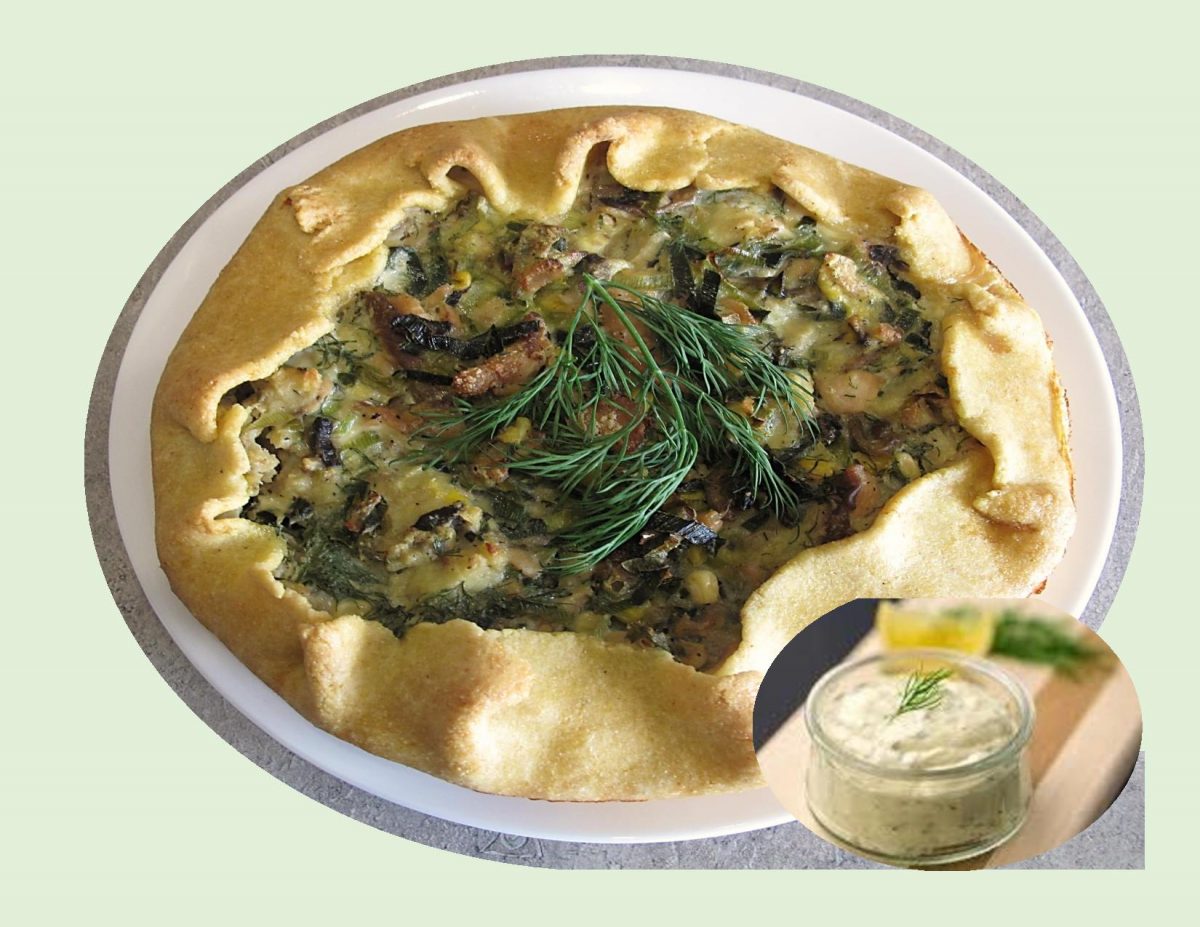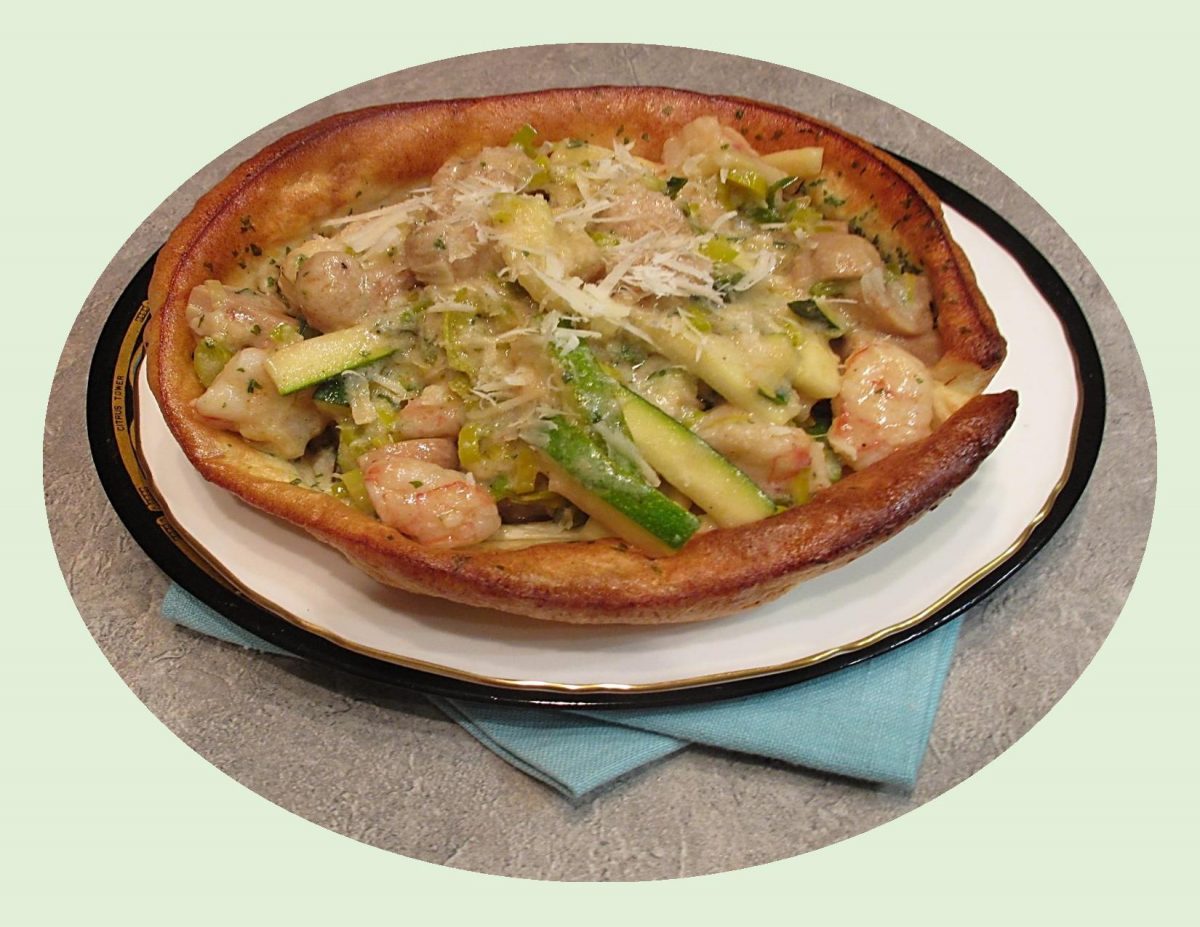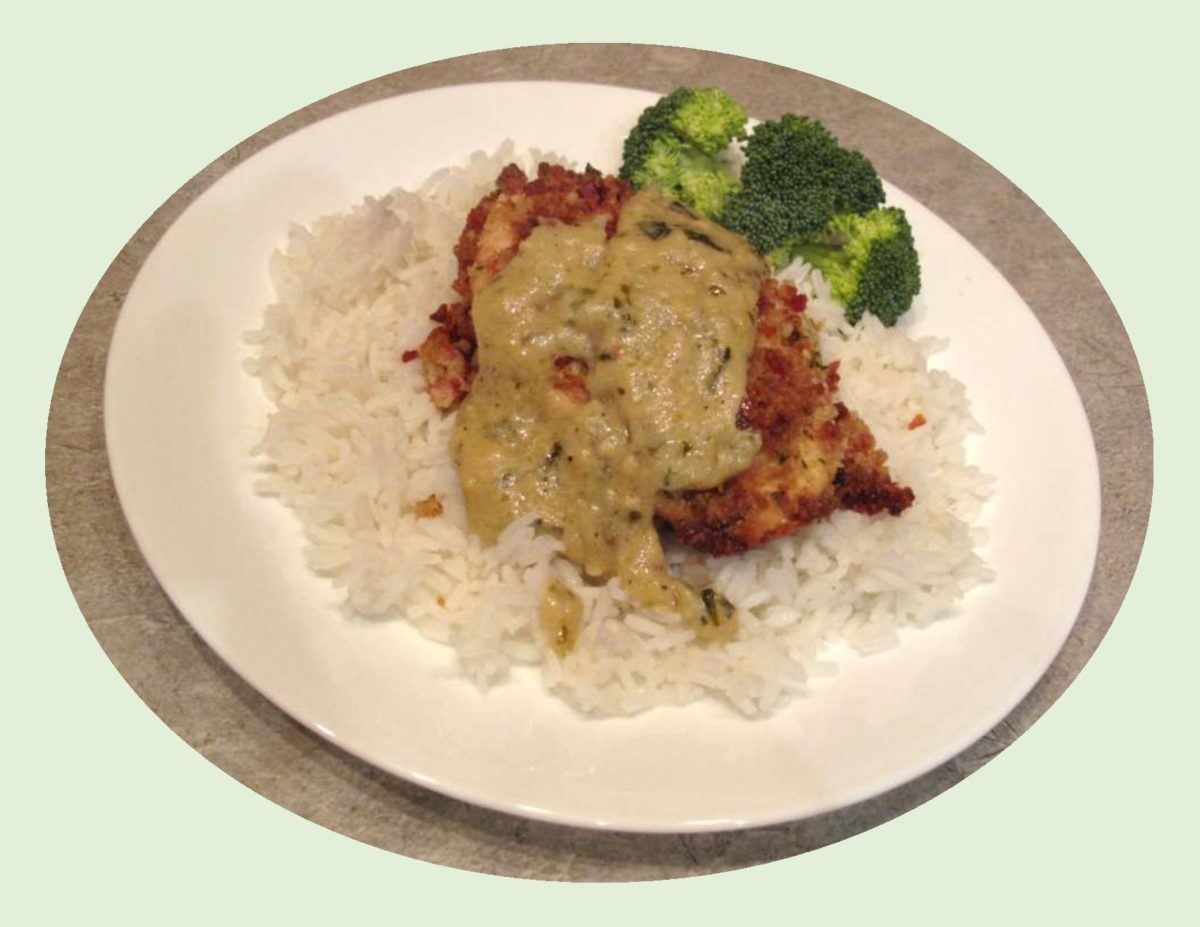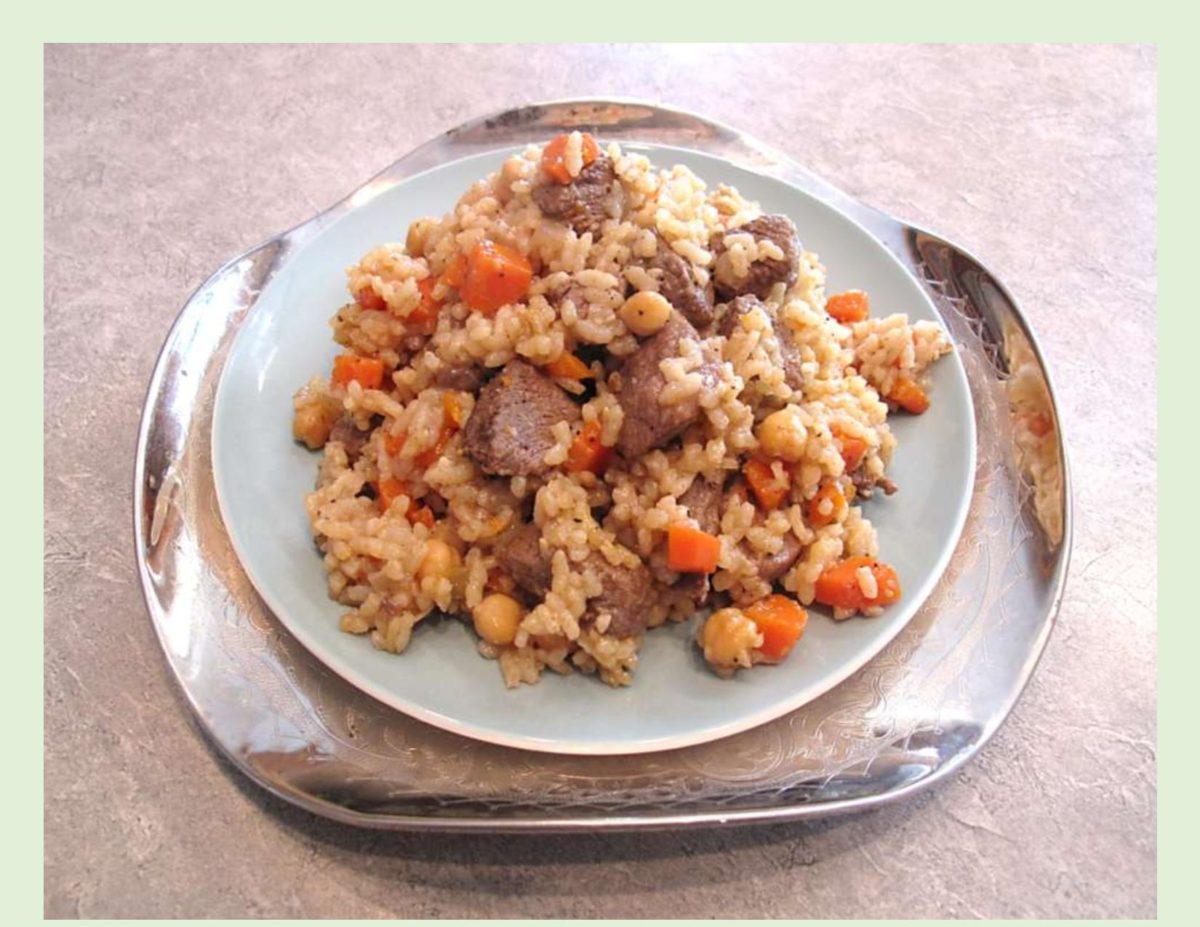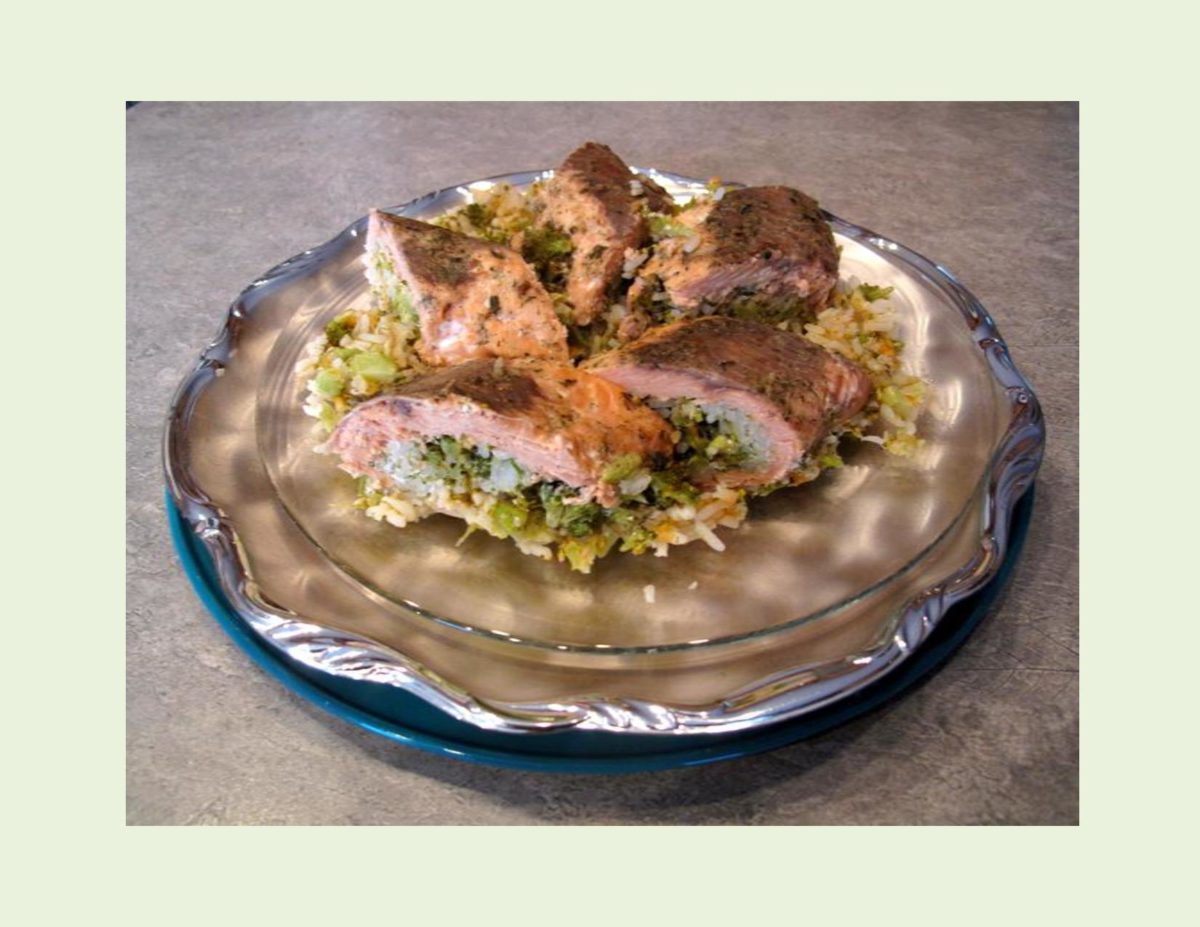If you have never tried a little cornmeal in your pastry crust, now is the time. The texture really is amazing. Tender and flaky, you will have a hard time going back to a traditional crust.
We all know that what separates a good quiche from a great one is the pastry crust. No matter how good the filling is, if the pastry is undercooked or overcooked, then the quiche becomes one of ‘those’ kind of meals. Cornmeal adds a touch of nutty flavor to the tart shell which makes this a great choice to use for both savory and sweet pies.
Despite its notoriety for being the key ingredient in cornbread, cornmeal is not a one-note ingredient. Cornmeal’s vibrant color and flavor brighten up many dishes and it creates a light, crispy crust when baked.
Since I started making cornmeal pastry years ago, it has become my go-to for sweet, savory and ‘in between’. In this quiche, it pairs extremely well with the salmon and veggies.

| Servings |
|
- 3 Tbsp sour cream
- 1/3 cup (approximately) ice water
- 1 cup flour
- 1/4 cup cornmeal
- 1 tsp sugar
- 1/2 tsp salt
- 100 gm (7 Tbsp) cold, unsalted butter
- 3/4 cup heavy cream or half & half cream
- 2 eggs
- 2 Tbsp fresh dill, snipped
- 1 tsp dry mustard
- 1/2 tsp EACH garlic & onion powder
- 1 tsp basil paste found in the herb section of the vegetable department at the grocery store
- 2 Tbsp unsalted butter
- 3 large leeks, washed & trimmed, white & pale green parts, thinly sliced
- 1 medium red bell pepper, finely diced
- 1/2 cup corn kernels, frozen, drained canned or fresh
- 250 gm cooked salmon, flaked
Ingredients
Sour Cream Cornmeal Pastry
Filling
|

|
- In a small bowl, combine sour cream & ice water; set aside. In a large bowl, whisk together flour, cornmeal, sugar & salt. Using a pastry blender or fingertips, cut in butter until mixture resembles BOTH coarse crumbs & small peas. Sprinkle the cold sour cream mixture over dough, I Tbsp at a time, tossing with a fork to evenly distribute it. After you have added all the sour cream mixture, dough should be moist enough to stick together when pressed; if not, add additional cold water, 1 tsp at a time. DO NOT overwork dough.
- Press dough into a disk shape & wrap in plastic wrap. Refrigerate for at least 2 hours. The dough can be kept in the refrigerator for a day or two or it can be wrapped airtight & frozen for a month. When ready to use, thaw, still wrapped in refrigerator.
- Preheat oven to 375 F.
- In a container, lightly beat eggs & add cream, dill, mustard spices & basil paste. Combine well.
- Roll out chilled pastry on a lightly floured surface into a 13-inch circle. Transfer pastry to a pie plate, leaving rough edges overhang dish.
- Spoon salmon into shell followed by leeks, red pepper & corn. Pour cream mixture over all then fold the rough pie edges into galette. Brush pastry edges with egg wash & bake until custard is set when a knife is inserted near center & pastry is baked, about 40-50 minutes.
- Remove galette from oven, allow to sand a few minutes, then slice & serve or serve at room temperature.
- Brion & I really enjoyed this galette with tartar sauce as a condiment.

